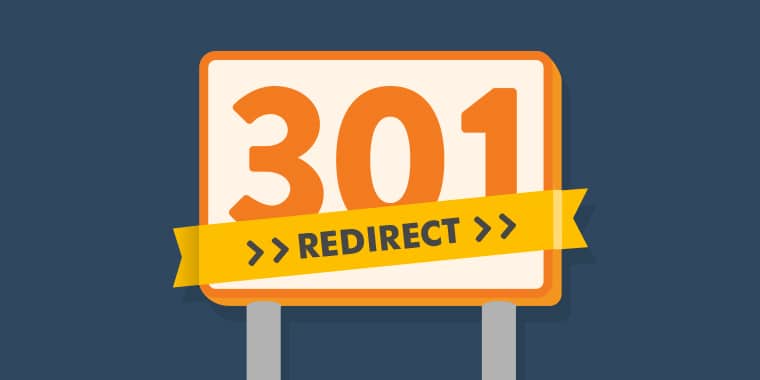
What is 301 Redirect & how 301 Redirects can help you in SEO?
301 redirect is a server-side redirect which tells the search engine that a page has been permanently moved to a new location.
301 redirects are often used when a website changes its permalink structure and needs to update its URLs. 301 redirects can also be used to fix broken links, redirect traffic from an old domain to a new one, or to point users to the correct version of a website.
301 redirects can help improve SEO by directing search engine crawlers to the correct page, and by helping to ensure that users are able to access the content they are looking for. In addition, 301 redirects can help to improve website speed and reduce server load. When used correctly, 301 redirects can be an important tool for improving website performance and search engine optimization.
301 Redirects [Video Tutorial]

There are times when 301 redirects are necessary. The reasons are already mentioned above but if you are in the field of SEO, you know why you need redirects now and then. What I want to talk about here is, are these redirects stepping on the toes of your other SEO initiatives?
Usually, for a mammoth and many-faced SEO giant to get up and run, you will need everyone to pull the chain in the same direction. Any counter-productive measure will bring the whole house down.
How incorrect 301 redirects can be bad for your SEO score
301 redirects are an important part of any website’s SEO strategy. They help to ensure that users will be directed to the correct page, even if they enter an outdated or incorrect URL. However, if a 301 redirect is not set up correctly, it can actually have a negative effect on SEO.
This is because incorrect redirects can result in 404 errors, which can cause search engines to de-index a page.
In addition, incorrect redirects can also create duplicate content issues, which can further hurt SEO efforts. As a result, it is essential to make sure that all 301 redirects are set up correctly in order to avoid any potential negative effects on SEO.
Let us first find out the ways in which 301 redirects can spoil the show for you.
The Internal Linking Maze
This one should be placed at the top of the heap, mainly because you need to get your own house in order before venturing outside. SEO executives are often quite relaxed about internal linking. As a result, the 301 redirects within the website lead to URLs that further redirect them. It is a maze that can hurt SEO efforts.
Search crawlers go on a wild goose chase and that reflects poorly on your site. A review of your internal links and which ones contain 301 redirects and to what destination is needed. This will help you keep the necessary ones and throw out the others.
The External Redirect Web
What happens on the inside is actually a microcosm of what can happen externally! Here too, the redirects are often unaccounted for, resulting in the search crawlers bouncing around on the redirect chain. With each redirect, the domain authority is further lost. Moreover, thanks to this bouncing around, the page loading time goes down drastically.
You know the implications of a slow web page for the user as well as the SEO ranking factors. If you do not act immediately, these redirects keep piling up and before you know it, the stack will be too high. Resolving this issue can be done in quick time by crawling the entire site with Screaming Frog. Find out the redundant redirects and your job’s done!
The Problem of Canonical Tags
This one is quite similar to the previous point, except that here you have to identify the canonical tags that lead to 301 redirects. You want to know which canonical tags are coming in the way. The process is simple and again Screaming Frog comes to the rescue! After running a full site crawl, head to the Directives section. On the right scroll, you will find the title Canonical Link Element 1. This will give you the list that you are looking for.
The Pile of 301 Redirects
With time, every website tends to accumulate 301 redirects. Largely due to the time and effort spent in the day to day handling of the site, no one looks at cleaning up this slate. The pile stacks up. The problem is that each time any URL of your site is summoned by the browser, the entire list of redirects is checked, every single time! You can imagine how much time is spent in uploading your page through this method.
There’s a good way to identify and remove these redundant tags that have accumulated over time. Use UTM tagging. With the help of UTM tags added to the 301 redirects, you can find out which of the redirects are active and which are lying dormant and unattended. The data will load up on Google Analytics and you can conduct a bi-annual cleaning of the unnecessary redirects.
There’s an easy way in which you can regain important links that have become dormant for whatever reason. And guess what? You can use 301 redirects to find them and bring them back! This is what you have to do.
A large website which has largely remained unchanged over the time will have important links buried under the debris. You can bring them back by using Open Site Explorer. Get the list of URL that are acting as targets. Use this list on Screaming Frog. If there are any errors showing on the Status Code column, you can use a 301 redirect to claim this integral link.
Please note, Permanent redirects are not bad for SEO if they are placed correctly and in relevance. But too many redirects increase server load. So you need to be careful. When you change any URL a 301 is a must for the old url.
Let me know how this works out for you!


0 responses on "How incorrect 301 Redirects can Ruin Your SEO Efforts"